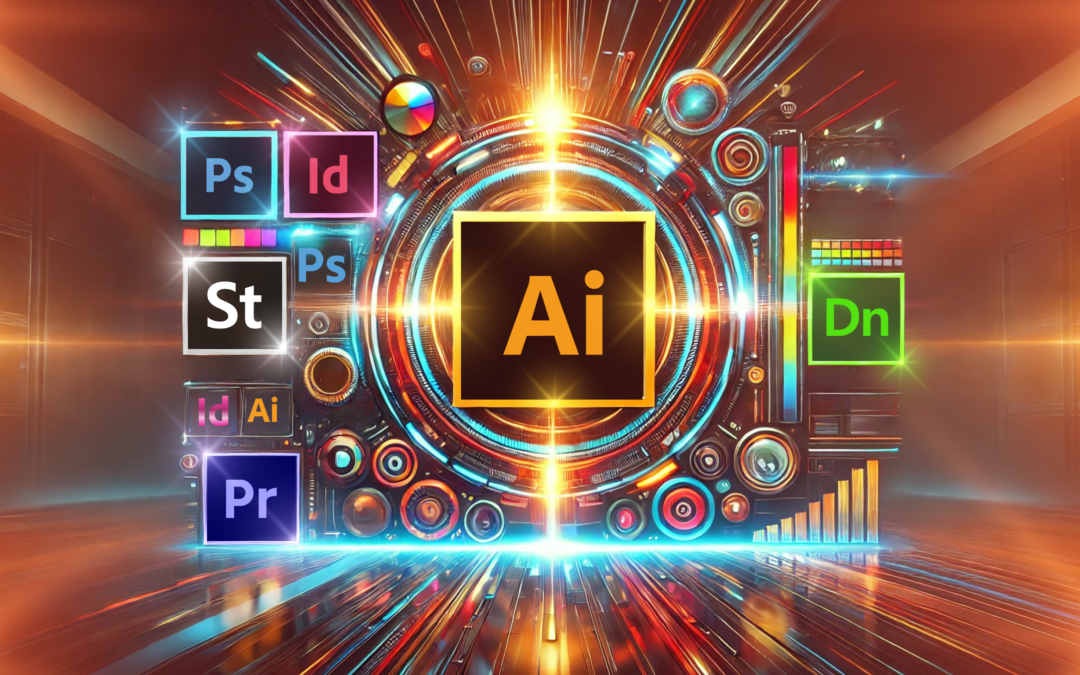When it comes to graphic design, two names are often mentioned: Adobe and Canva. Canva's appeal lies in its simplicity and accessibility, print professionals know that quality and precision are essential. This is where Adobe stands out.
In this article, we'll take a look at why print experts prefer Adobe, and what you can do about it. limits of Canva for professional work.
1. Adobe: A Complete Suite for Professionals
Adobe offers a suite of tools for every graphic design need. Whether for a flyer, poster, business card or catalogIts software offers advanced customization and total control.
-
Adobe Photoshop Ideal for image processing and complex visuals.
-
Adobe Illustrator Perfect for logos and vector illustrations, guaranteeing impeccable print quality.
-
Adobe InDesign The layout tool par excellence, used to create brochures, magazines and catalogs.
Thanks to this software, printers can work with adapted files, avoiding format or resolution errors.
2. Canva: A popular but limited tool
Canva is designed to be accessible to everyone, which is both a strength and a weakness. Pre-designed templates and limited options prevent advanced customization.
Canva's limitations for printing :
❌ Limited export : Impossible to obtain high-quality files with true color control.
❌ Format problems : Canva prefers files RGBwhereas printing requires CMYK.
❌ Insufficient resolution Imported images and designs are not always high-resolution, resulting in blurred or pixelated printouts.
In a nutshell, Canva is perfect for web publications, but insufficient for professional-quality prints..
3. Print Quality: A Key Factor
Adobe: Professional rendering guaranteed
✅ Advanced color management with CMYK mode, guaranteeing faithful color reproduction.
✅ Ultra-high resolution thanks to vector files and adjustable DPI settings.
✅ Adapted formats (high-quality PDF, AI, EPS, TIFF), used by printers.
Canva: Compromising on quality
🚨 Canva does not allow a precise conversion to CMYKThis results in color deviations when printed.
🚨 Files exported in PDF are often compressed, reducing their quality.
🚨 No access to advanced resolution settings, which may compromise the final result.
4. Flexibility and Customization: Adobe in the lead
With Adobe, the creative possibilities are endless. You have total control over layers, effects, typography and dimensions.
Canva, on the other hand, works on a system of rigid modelswith little room for manoeuvre. The designs can quickly seem generic, and the files are not easy to read. extensively modifiable once exported.
For professional printers and graphic designersAdobe is therefore the key to unique, high-quality design.
5. Cost vs. Investment: Is Adobe worth it?
Canva offers a free version, but with numerous restrictions :
-
Limited library of images and graphics.
-
Restricted export options.
-
Impossible to modify colors with precision.
Adobe, on the other hand, is not free, but represents a profitable investment for total freedom and quality. A serious company that wants professional visuals cannot afford to compromise on quality..
6. Why printers prefer Adobe files
In the printing sector, receiving a well-prepared file is essential to avoid costly rework or mistakes.
🎯 Adobe files are optimized for printing : resolution, colors and formats are adapted.
🎯 Printers can easily modify and adjust files as required.
🎯 Canva files often require correctionswhich can lead to additional costs for the customer.
If you want perfect printing from the very first tryAdobe is the obvious choice.
Conclusion
Canva is an excellent tool for amateurs and digital creationsbut when it comes to printing, Adobe remains the absolute reference.
In a nutshell:
✔ Adobe = Professional quality, total control, adapted formats.
❌ Canva = Customization limits, color and resolution problems.
If you want to guarantee impeccable printingit's best to work with a graphic designer who uses Adobe or ask your printer for the specifications required before sending a Canva file.
Need optimal print rendering? Trust Adobe files for uncompromising results!
FAQ
1. Can I use Canva for professional printing?
Canva is not designed for high-quality printing. It may be suitable for small projects, but it presents limitations in resolution and color management.
2. What's the best resolution for a printable file?
A file must be in 300 DPI minimum to avoid any loss of quality. Adobe lets you set this option, unlike Canva.
3. Why does my Canva design come out blurry in print?
This often comes from a resolution too low or format incorrectly exported. Canva compresses files, which can alter their sharpness.
4. Which file format is recommended for printing?
High-quality PDF (CMYK, 300 DPI) is ideal. Adobe also lets you export in TIFF, EPS and AIwhich are perfect for printing.
5. Is Adobe difficult to learn?
Adobe takes time to learn, but once you've mastered it, you'll be ready to go, it offers unlimited possibilities. There are many tutorials and training courses to help you perfect your skills quickly.

